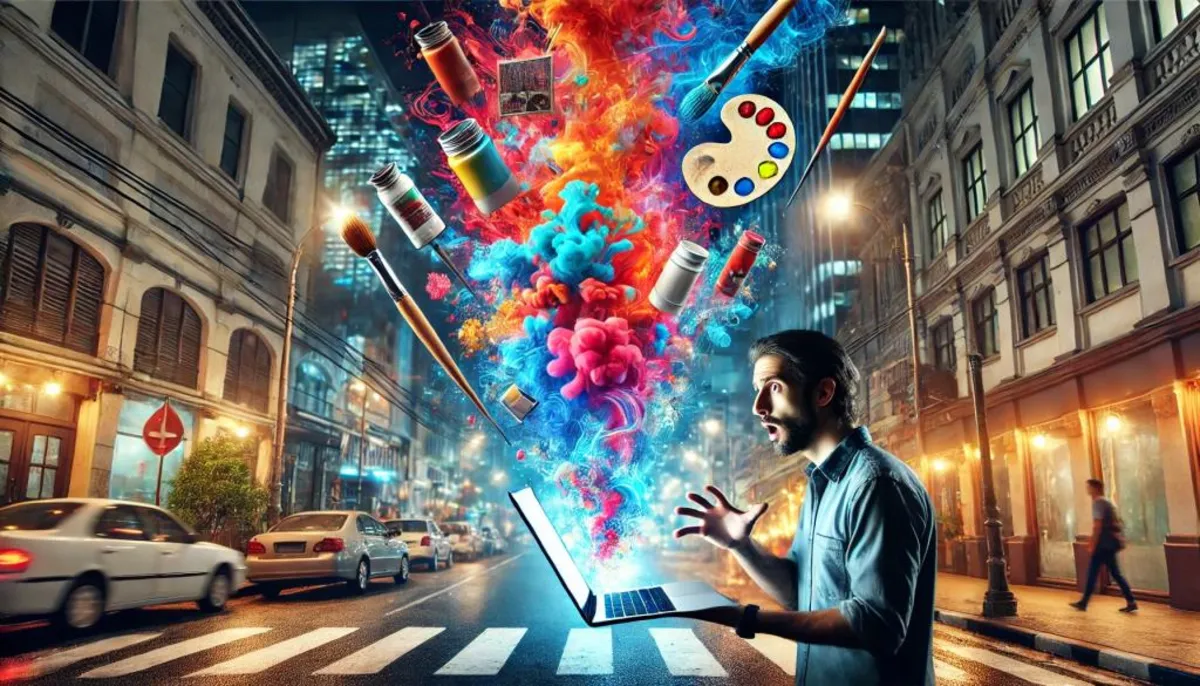
As we approach the one-year anniversary of OpenAI's groundbreaking multimodal model, GPT-4o, released in May 2024, exciting developments continue to unfold. OpenAI has officially launched the native multimodal image generation features of GPT-4o for users of its popular chatbot, ChatGPT. This update is available across various usage tiers, including Plus, Pro, Team, and Free, with plans to extend access to Enterprise and Edu users, as well as through its API.
Previously, image generation in ChatGPT relied on OpenAI’s DALL-E 3, a diffusion transformer model designed to reconstruct images from text prompts. In contrast, GPT-4o integrates image generation as a native feature within the same model that generates text and code, enhancing the overall user experience by enabling a deeper understanding of different media types simultaneously. OpenAI's president, Greg Brockman, had previewed this capability back in May 2024, although its release was delayed until now, possibly in response to similar features introduced by competitors like Google AI Studio.
With the launch of GPT-4o's image generation, users can expect significantly improved quality, producing lifelike images with accurate text integration. Feedback from early users has praised the model, with one describing the image quality as “insane.” However, OpenAI has yet to disclose the specific datasets used to train GPT-4o’s image generation capabilities, raising concerns about potential copyright issues related to the artworks included in the training data.
OpenAI has consistently aimed to make image generation a fundamental feature of its AI models. With GPT-4o, users can now easily generate images within ChatGPT, refining and adjusting them through interactive conversations. Additionally, this functionality extends to Sora, OpenAI’s video-generation platform, further enhancing the model's multimodal capabilities.
In a recent announcement on X, OpenAI detailed the key features of GPT-4o’s image generation:
Accurate text rendering: Users can create images featuring text, such as signs, menus, and infographics. Complex prompt handling: The model maintains high fidelity in detailed compositions, accurately following intricate prompts. Visual consistency: Users can build upon previous images and text, ensuring coherence across multiple interactions. Support for artistic styles: GPT-4o can generate images in various styles, from photorealism to stylized illustrations.Users can specify details like aspect ratios, color schemes (including hex codes), and transparency, and GPT-4o can generate images within a minute, making it a powerful tool for creativity and productivity. Independent AI consultant Allie K. Miller noted on X that this represents a “huge leap in text generation” and referred to it as “the best” AI image generation model available today.
GPT-4o is designed to make image generation not only visually stunning but also practical for various industries. Here are some key applications:
Design & Branding: Users can create logos, posters, and advertisements with precise text placement. Education & Visualization: The model can generate scientific diagrams, infographics, and historical imagery to enhance learning. Game Development: Game designers can maintain character consistency across different design iterations. Marketing & Content Creation: Produce tailored social media assets, event invitations, and digital illustrations that align with brand needs.According to OpenAI's official communication on X, GPT-4o introduces several enhancements over previous models, including:
Better text integration: GPT-4o can accurately embed words within images, overcoming challenges faced by earlier models. Enhanced contextual understanding: The model uses chat history, allowing users to refine images interactively while maintaining coherence. Improved multi-object binding: GPT-4o can accurately position up to 10-20 distinct objects in a single scene. Versatile style adaptation: The model can generate or transform images into a wide range of artistic styles.Despite its advancements, GPT-4o does have some limitations:
Cropping Issues: Larger images, such as posters, may occasionally be cropped too tightly. Text Accuracy in Non-Latin Scripts: Some non-English characters may not render as intended. Detail Retention in Small Text: Highly detailed or small-font text may lose clarity in the generated images. Editing Precision: Modifications to specific parts of an image may inadvertently affect other elements.OpenAI is actively addressing these challenges through ongoing model refinements, ensuring continuous improvement in performance.
OpenAI remains committed to responsible AI development. All images generated by GPT-4o include C2PA metadata, enabling users to verify their AI origin. Additionally, OpenAI has implemented an internal search tool to detect AI-generated images, alongside strict safeguards to block harmful content and prevent misuse. For instance, explicit, deceptive, or harmful imagery is prohibited, and images featuring real individuals are subject to heightened restrictions.
OpenAI CEO Sam Altman described the release of GPT-4o as a “new high-water mark for creative freedom,” highlighting the tool's potential for a wide range of visual creations. As AI-generated images become increasingly precise and accessible, GPT-4o marks a significant advancement in making text-to-image generation a mainstream resource for communication, creativity, and productivity.